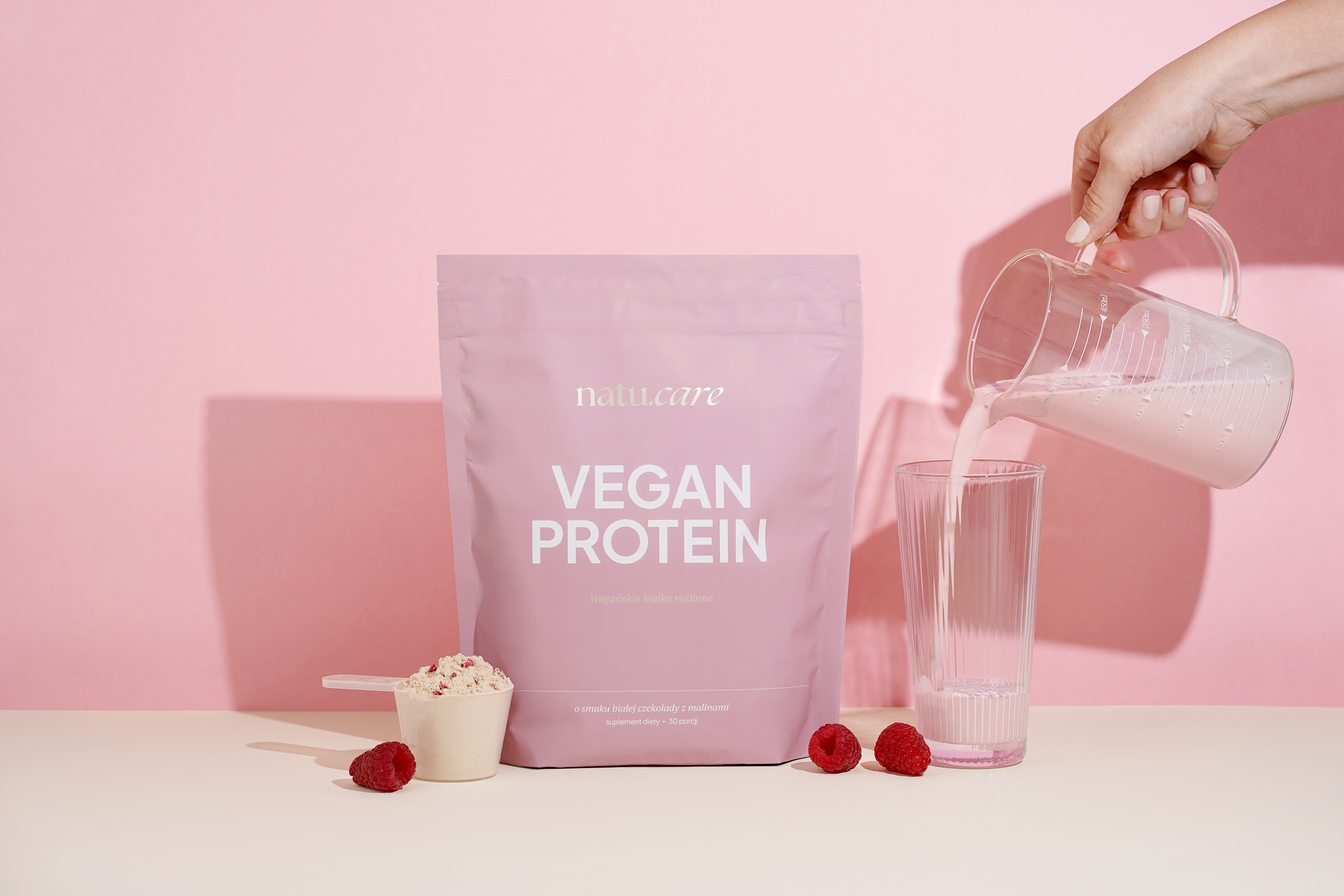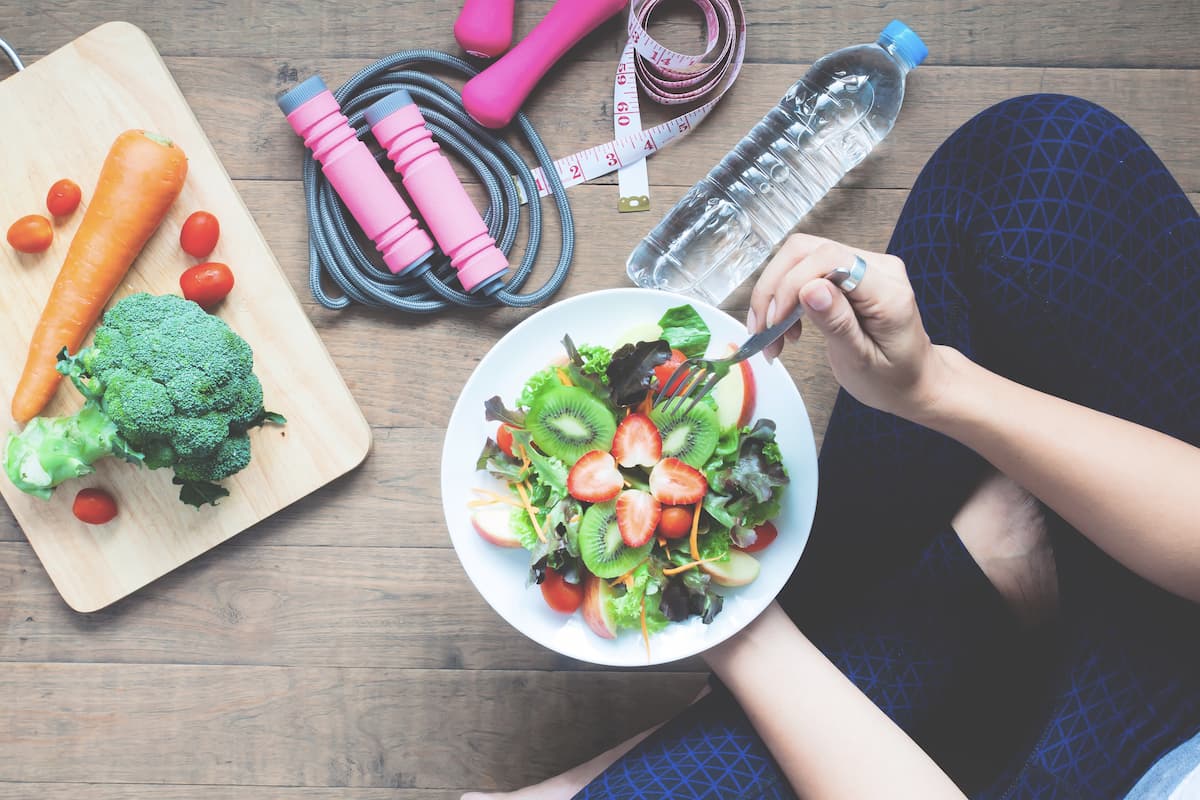The easy-to-digest diet: easy-to-digest foods, recipes, tables and diet effects
An easy-to-digest diet will help you recover from gastrointestinal problems.


Learn more about our editorial process
.

Learn more about our editorial process
.

Learn more about our editorial process
.

Learn more about our editorial process
.
Why you can trust us
Articles on Natu.Care are written based on scientific research, data from government websites and other reliable sources. The texts are written in cooperation with doctors, nutritionists and other health and beauty experts. Articles are reviewed before publication and during significant updates.
.Learn more about our editorial process
.Information about advertisements
Content on Natu.Care may contain links to products from the sale of which we may receive a commission. When creating content, we adhere to high editorial standards and take care to be objective about the products discussed. The presence of affiliate links is not dictated by our partners, and we select the products we review ourselves completely independently.
.Learn more about our terms and Conditions
.I would venture to say that an easy-to-digest diet is useful for everyone at least once. That's why it's worth knowing its principles - in case of poisoning, stomach flu or other problems with the digestive system.
Easily digestible food will help calm the raging intestines during diarrhoea or soothe the stomach when tired of mucositis. This feeding model will work for both children and seniors. Below you will find all about how to prepare meals when the digestive system needs a respite.
From this article you will learn:
.- What an easy-to-digest diet is. .
- What foods are recommended in this dietary model.
- What to avoid.
- What to avoid to make meals easily digestible.
- What to avoid.
- How to prepare food so that it is easy to digest.
- How to prepare food so that it is easy to digest.
- Who should benefit from an easily digestible diet.
- How to prepare food for easy digestion.
- How to prepare simple and easily digestible dishes. .

Odkryj, co dla Twojego zdrowia i urody może zrobić Natu.Care Vegan Protein, wegańskie białko roślinne -15% z kodem BLOG15
Natu.Care Vegan Protein
Pyszne, wegańskie białko roślinne, biała czekolada i malina - pomoże uzupełnić Twoją dietę w wartościowe proteiny. To aż 26 g białka i tylko 136 kcal w porcji.
Sprawdź cenę
Dzięki białku od Natu.Care moja odporność się poprawiła a włosy wzmocniły. A smak białej czekolady z maliną - to świetnie połączenie!Gabriela
See also:
- Mediterranean diet
- DASH diet
- Diabetes diet
- SIRT diet
- Ketogenic diet .
- Dr. Dabrowski's diet
- Healthy breakfast recipes
What is an easy-to-digest diet?
.
A light diet, otherwise known as an easy-to-digest diet, is a modification of the basic diet, aimed at relieving the burden on the digestive system. This diet should provide you with the same number of kilocalories and nutrients as a standard dietand.
The changes you make to your diet mainly involve reducing foods that are difficult to digest and linger in the gut for a long time. These include, for example, large amounts of fibre (especially the fractions that are only broken down in the intestines), as well as fried, fatty foodsand.
On an easy-to-digest diet, foods that cause increased secretion of gastric juices (e.g. spicy foods) and those that cause bloating (legumes and brassica vegetables) should also be eliminated. Alcohol and caffeine are also prohibited - as well as irritating the gastric mucosa, they can also cause diastasis of the lower oesophageal sphincter, which promotes refluxand.
.
It is also worth noting that an easy-to-digest diet is in most cases good for a limited period of time, e.g. in the course of gastric complaints or convalescence after certain operations. Once the reason for its use has passed, most patients can return to their standard dietand.
Meal preparation principles
.
A light diet should be based on frequent but small portions. Eating 4-6 meals a day is optimal. However, avoid eating two large portions, such as breakfast and dinner. Excessive amounts of food taken in at once will strain the digestive system, even if the food is easily digestible.
By eating more smaller meals, you will ensure better digestion and absorption of nutrients and regulation of insulin metabolism, which also has a positive impact on your health and well-beingand.
And here are some simple tips on how to prepare meals on an easy-to-digest dietand:
.
- .
- The more overcooked a food is, the easier it is to digest. When you cook, the dietary fibre content of fruit and vegetables is reduced.
- Blending, grinding or mashing through a sieve also improves the digestibility of foods. .
- Avoid eating raw vegetables and fruits, as well as whole grain products and seeds and seeds. .
- Remove skins and seeds from vegetables and fruits before eating. .
- Choose boiling, steaming, stewing or baking in foil, sleeves or under a lid when handling food.
- The softer the food, the easier it is to digest. To make the food fluffier, you can add foam from beaten egg whites to the food, and soaked breadcrumbs to meat dishes.
- The softer the food, the easier it is to digest.
- Soups and sauces are best thickened with flour diluted in water or milk. Potato starch (flour) also works well in this role - a small amount is enough. It distributes well in liquids and does not form unsightly lumps.
- Eat your last meal 2-3 hours before bedtime. At night your intestines also want to go to sleep. Eating before a night's rest will either cause indigestion and a long lingering of food in your digestive system, or... make it difficult for you to fall asleep.
- The following is a good example of this.
Remember the basics
.On an easy-to-digest diet, as with any diet, remember to drink enough fluids. It is recommended to drink approximately 30 ml/kg body weight per day.
Rigestible foods - table
. .
|
Product/meal group . |
Specific examplesand |
|
|
Bread . |
White breads and rolls, preferably stale |
|
|
Other cereal products |
White rice Wheat flour Barley groats Barley groats Manna groats Marshmallow groats .Fine white pasta . |
|
|
Vegetables |
Cooked, roasted and stewed, especially: Carrots |
Vegetables. Carrots Potatoes Beetroot Spinach Parsley Selery Cabbage Pumpkin Skinless tomato |
|
Fruits |
Apples Bananas Morels Beaches Blueberries Blueberries - preferably also subjected to heat treatment (baking, stewing, cooking) . |
|
|
Fats . |
Good quality fats, added to food cold. In particular: Olive oil Rape seed oil .Flaxseed oil Fresh butter . |
|
|
Meat |
Lean cuts of meat without skin: Chicken breast, turkey .Beef and veal: sirloin, .Stroke, shoulder, brisket Good quality lean meats: ham, loin, .tenderloin, fillet . |
|
|
Fish |
Dorghum Sole Mintain Rabaga trout Sanders Perch Pike |
|
|
Aggs |
Shirted and soft-boiled Omelets and scrambled eggs cooked by steaming or fried fat-free . |
|
|
Food |
||
| . |
Natural yoghurt Kefir Skyr, kvarg .Sour milk Sour milk Buttermilk Skim or semi-skimmed quark Low-fat milk (<2%) .Low-fat yellow cheese (e.g. gouda type) . |
|
|
Soups |
Cleeks and well-cooked oatmeal Tomato Tomato soup Potato Potato soup Vegetable soup (made from permitted vegetables) Vegetable broth Skim broth Krupnik |
|
|
Beverages |
Non-carbonated water Low tea Compote |
|
|
Preparations |
Thyme Basil Rosemary Cinnamon Lupine Vanilla Mayberry Dill Parsley leaves |
20 questions about digestibility
.
Is cauliflower easy to digest?
.
On an easy-to-digest diet, cauliflower is allowed in limited quantities. The vegetable contains quite a lot of fibre, but you can reduce the fibre content by cooking it.
Whether milk is indigestible
.
Skim milk up to 2% is considered easily digestible, but only for people who do not have problems with lactose intolerance. If you suffer from this problem, opt for lactose-reduced milk, or so-called lactose-free milk or plant-based drinks.
Is the tomato easily digestible?
Yes, the tomato is an easily digestible vegetable, but provided you remove the skin.
Are peppers easily digestible?
.
No, both sweet and hot varieties of peppers are hard to digest. In addition, spicy peppers can irritate the mucous membrane of the stomach.
No.
Is spinach easily digestible?
.
Spinach can be digestible if you cook it or stew it. When on an easily digestible diet, do not eat it raw.
Is an apple digestible?
.
To make an apple easily digestible, peel it and cut out the seeds. Then boil, stew or bake it. For even greater digestibility, you can also grate or blend them into a mousse before cooking.
Apples can also be eaten in a variety of ways.
Are green beans easily digestible?
.
Asparagus beans can be digestible if they are young. For the older ones, remove all the tough fibres. Also remember the correct cooking time.
Eat a small portion and observe how you feel. If you experience any digestive discomfort, avoid it next time. At least until you have completed your easy-to-digest diet.
Cooking.
Are bananas easily digestible?
Yes, bananas are one of the easily digestible fruits recommended on an easy-to-digest diet.
Is pudding easily digestible?
.
Yes, pudding is one of those sweet snacks you can opt for on an easy-to-digest diet. However, be careful about the milk you use to make it. If you are lactose intolerant, choose lactose-free milk lactose-free.
Is yoghurt easily digestible?
.
Yes, yoghurt is easily digestible and can contain probiotics that support the digestive system. Yoghurt (especially natural yoghurt, without extra sugar, flavour enhancers or colourings), will be a good addition of calcium to your menu. However, if you suffer from small intestinal bacterial overgrowth syndrome (SIBO), rather avoid it.
Is yellow cheese easily digestible?
On an easy-to-digest diet, it is best to steer clear of full-fat yellow cheeses with a sharp taste and aroma, as well as smoked ones. If you can't imagine breakfast without a yellow cheese and tomato sandwich, choose one with a mild flavour and reduced fat content.
If you can't imagine breakfast without a yellow cheese and tomato sandwich, choose one with a mild flavour and reduced fat content.
Is mozzarella easy to digest?
.
Mozzarella can be digestible if you choose one that is reduced in fat (so-called light).
Are strawberries easily digestible?
Strawberries, due to their fine seed content, cannot be considered easily digestible. On the other hand, blending them into a mousse and rubbing them through a sieve makes them easily digestible..
 .
.
Aleksandra Cudna-Bartnicka Clinical nutritionist
Is chocolate easy to digest?
.
Unfortunately - chocolate is not easily digestible. On this type of diet, it should be avoided.
Is it easy to digest?
Is cucumber easily digestible?
Cucumber is one of the hard to digest vegetables. On top of that, experts report that most patients on an easy-to-digest diet react badly to it. It is better to eliminate it from the menu for the necessary time.
Is coffee indigestible?
Coffee can act as an irritant to the stomach. In addition, it can also promote excessive relaxation of the lower oesophageal sphincter. On an easy-to-digest diet, it is recommended to give up this drink, especially if you like strong black coffee. You can replace black coffee with cereal coffee.
Are beetroots easily digestible?
Yes, beetroots are one of the recommended vegetables in an easy-to-digest diet. They are perfect for roasting, boiling in water and steaming. They can be used as an ingredient in soups or as a side dish in grated form.
Beetroot.
Is cottage cheese easily digestible?
Cottage cheese will be easily digestible if you opt for its lean or semi-skimmed variant. Also, remember to only consume fresh white cheese - keep an eye on the use-by date as it is a product that goes rancid quickly.
Are sponge cakes easily digestible?
.
Yes, sponge cakes are easily digestible. If you are tempted to eat some cake on an easy-to-digest diet, they will be a good choice. Be aware, however, that they are a source of simple sugars that should be avoided.
Are nuts easy to digest?
.
No, nuts - although very healthy - are hard to digest. They contain a lot of fat and fibre, so on an easy-to-digest diet they should be avoided.
No.
What's sweet on an easy-to-digest diet?
.
Everyone craves a sweet something sometimes. Even on an easy-to-digest diet, you don't have to give up small pleasures and desserts altogether. The following are ideal for this role:
.
- .
- pudding, .
- kisel,
- fruit mousses
- jellies,
- galloons
- biscuits, .
- biscuits (sugar-free or gluten-free), .
- yeast cakes, .
Natu.Care Collagen Premium 5000 mg, mango & passion fruit

- Collagen content: 5000 mg marine collagen hydrolysate
- Additional active ingredients: vitamin C, low molecular weight hyaluronic acid (and L-theanine and coenzyme Q10 in cocoa flavoured collagen or vitamin A and vitamin E in mango–passion fruit flavoured collagen)
- Form: powder sachets
- Dose: 1 sachet per day
- Sufficient for: 30 days
Product description
Fish collagen from the Natu.Care brand in a dose of 5000 mg, based on certified ingredients of the best quality. Regular supplementation will positively influence the appearance of the skinóry, hairów and nails – they will be rebuilt and strengthened from the inside.
In addition to collagen, which is valuable for health and beauty, it also offers other active ingredients that help to maintain a youthful complexion, shiny hair and strong nails.
The formula contains a sufficient portion of the active ingredient to positively affect joints, the musculoskeletal system and immunity.
Natu.Care Premium Collagen is available in two flavours – Cacao Bloom and Rise&Shine. Both formulas are based on the following active ingredients: marine collagen hydrolysate, wild roseóbud extract and hyaluronic acid.
Additionally, Cacao Bloom contains natural L-theanine, coenzyme Q10 and defatted Dutch cacao. Rise&Shine instead contains vitamin E and vitamin A.
These are the best collagens in the world.
These best fish collagens on the market also rós taste – Cacao Bloom is a treat for chocolate lovers. Rise&Shine will appeal to those whoólike the refreshing taste of mangoófruit and passion fruit.
Pros and cons
Pros:
- Vitamin C supports the body's collagen production, enhancing its effectiveness.
- An effective dose of hyaluronic acid, which additionally supports skin hydration and joint health.
- Fish collagen absorbs 50% better. Additionally, the manufacturer specifies the fish species it is sourced from (Atlantic cod).
- The composition has been tested by the independent and accredited J.S. Hamilton laboratory.
- MSC (Marine Stewardship Council) quality certification, which confirms that the collagen source supports sustainable fishing practices.
Cons:
- None.
Additional information
Natu.Care's fish collagen receives praise for its delicious taste. You won't find the fishy aftertaste that often comes through in other collagens. Plus, you have two tasty flavors to choose from: cocoa and mango-passionfruit.
Active ingredients like coenzyme Q10, hyaluronic acid, and natural L-theanine provide anti-inflammatory and antioxidant benefits while slowing down aging processes.
User review
Super, after about 6 weeks of use, the skin on my face became noticeably firmer. Wonderful taste.
Ania ZalewskaNatu.Care customer
Natu.Care Premium collagen 10 000 mg, mango-maracuja

- Collagen content: 10,000 mg marine collagen hydrolysate
- Additional active ingredients: vitamin C, low molecular weight hyaluronic acid (and L-theanine and coenzyme Q10 in cocoa flavoured collagen or vitamin A and vitamin E in mango–passion fruit flavoured collagen)
- Form: powder sachets
- Dose: 1 sachet per day
- Sufficient for: 30 days
Product description
One of the strongest collagens on the market, whichós provides as much as 10,000 mg in a daily serving. This allows the formula to effectively support the condition of the skin, hair and nails.
With this supplement, you will support your beauty, which will allow you to visually stop the ageing process and feel a second youth!
Natu.Care Collagen Premium 10 000 mg comes in two flavours – cherry and mango-maracuja. Both formulas have the same product backbone – collagen, hyaluronic acid and vitamin C.
In the cherry version you additionally find glucosamine, chondroitin and Indian frankincense resin extract. Mango-maracuja, on the other hand, contains vitamin E and vitamin A.
Pros and cons
Pros:
- Tested collagen formula – SeaGarden, whose effects have been confirmed in clinical studies.
- Effective dose of hyaluronic acid, additionally moisturizing the skin and positively impacting joint health.
- Vitamin C supports the body’s natural collagen production.
- The composition has been tested by the independent and accredited J.S. Hamilton laboratory.
- The product has an MSC (Marine Stewardship Council) quality certification – the collagen source supports sustainable fishing practices.
Cons:
- None.
Additional information
Users praise Natu.Care Collagen Premium for the easy dissolvability of the powder.
User review
I noticed a significant improvement in my skin texture after a few weeks of taking collagen regularly. My complexion is now as soft as velvet!
Natu.Care Collagen Premium 10000 mg, cherry

- Collagen content: 10,000 mg of hydrolyzed bovine collagen
- Additional active ingredients: vitamin C, low molecular weight hyaluronic acid, glucosamine, chondroitin, extract of Indian frankincense resin (boswellia serrata)
- Form: powder sachets for drinking
- Serving: 1 sachet per day
- Lasts for: 30 days
Product description
One of the strongest collagens on the market, providing as much as 10,000 mg per daily serving. This product can effectively support the condition of joints, skin, hair, and nails.
With this supplement, you will support your skeletal and joint system as well as your beauty, helping you visually halt the aging process and feel rejuvenated!
Pros and cons
Pros:
- The daily portion of collagen is very large – as much as 10,000 mg.
- Proven collagen formula – COLLinstant, whose effectiveness has been confirmed in clinical studies.
- Effective dose of hyaluronic acid, which additionally moisturizes the skin and positively affects joint health.
- Vitamin C supports the body's natural collagen production.
- Glucosamine is a fundamental building block of compounds found in joint cartilage and a component of collagen that gives elasticity to connective tissue in tendons.
- Chondroitin is a natural component found in the human body, mainly in cartilage. This large molecule (mucopolysaccharide) has the ability to absorb water, which helps maintain the elasticity and resilience of cartilage.
- Frankincense resin extract supports blood circulation and joint mobility and reduces their stiffness. It may help alleviate inflammatory conditions.
- The composition has been tested by the independent and accredited J.S. Hamilton laboratory.
Cons:
- None.
Additional information
Users praise Natu.Care Collagen Premium for the easy dissolving of the powder.
Premium Sodium Butyrate
Product description
Premium Sodium Butyrate is a natural support for your digestive system. With a high dose of butyric acid (940 mg), it supports the regeneration of the intestinal mucosa, improving gut health and function, and aids in the absorption of nutrients. By taking care of your intestines, you're taking care of the health of your entire body.
Studies involving people suffering from irritable bowel syndrome confirm that sodium butyrate is ideal for supporting issues related to bacterial flora imbalances (for example, after antibiotic therapy), constipation and diarrhea, inflammation of the intestinal mucosa, or a diet low in fiber.
Premium Sodium Butyrate capsules are made using the innovative DRcaps® technology. This guarantees that the active ingredients in the product are protected from the destructive effects of stomach acids and digestive enzymes. As a result, we can be sure that the beneficial ingredients are released in the small intestine and are fully absorbed by our body.
Premium Sodium Butyrate from Natu Care is 100% tested, and its composition contains only the highest quality raw materials.
Pros and cons
Pros:
- Supports digestive system function
- Helpful for various gastrointestinal conditions, including IBS
- High dose of butyric acid in each capsule
- Eco-friendly, clean, and tested composition
- Free from added sugar, gluten, GMOs, and lactose
- Innovative capsule technology - DRcaps
Cons:
- None
Additional Information
Take 3 capsules daily at any time of the day, preferably with a meal. Swallow the capsules whole with water.
Premium Sodium Butyrate is intended for adults.
The product should be used under medical supervision.
User review
I've been using the product for 2 weeks. My stomach feels lighter, and my digestion has improved. I recommend it.
Natu.Care Premium Magnesium + Vitamin B6

- Magnesium content per day: 305 mg
- Additional active ingredients: Vitamin B6 (2.1 mg)
- Form: capsules
- Serving size: 3 capsules per day
- Sufficient for: 30 days
Product description
The Premium Magnesium + Vitamin B6 dietary supplement is a comprehensive product that combines three organic forms of magnesium (citrate, malate, and diglycinate) and vitamin B6 in highly absorbable forms.
Magnesium is an essential mineral without which our bodies cannot function properly. It supports the immune, nervous, and muscular systems, maintains electrolyte balance, and is involved in cell division and the regulation of mental functions.
Research shows that magnesium supplementation is even more effective when accompanied by vitamin B6, which is included in our product. Vitamin B6 is responsible for the proper functioning of the nervous and immune systems, as well as the proper functioning of the heart.
If you want to safely get rid of feelings of fatigue, concentration problems, hair loss, muscle cramps, trembling, or irritability, reach for Premium Magnesium from Natu.Care, tested by the independent, certified laboratory J.S. Hamilton Poland.
Pros and cons
Pros
- Supports the proper functioning of the nervous and immune systems.
- Reduces feelings of fatigue and tiredness.
- Maintains proper psychological functions.
- The purity of the ingredients (free from anti-caking agents, artificial fillers, and additives such as titanium dioxide, microcrystalline cellulose, talc, magnesium stearate, and silicon dioxide) has been confirmed by laboratory tests.
- High absorption of ingredients.
- Soft capsules that are easy to swallow.
- Suitable for vegetarians and vegans.
Cons
- None.
Additional information
Take with a meal, 3 capsules per day.
The capsules should be taken with at least 250 ml of water.
If you have trouble sleeping, it is advisable to take 1 capsule in the morning and 2 capsules in the evening, no later than 4 hours before bedtime.
Avoid combining with products high in calcium (milk, yogurt, cheese), as this may negatively affect magnesium absorption.
Pregnant and breastfeeding women should consult a doctor before starting supplementation.
User review
I’m very impressed with the speed of delivery. The product itself is of high quality and absorbs well. After two weeks of supplementation, I’ve noticed a significant improvement in muscle recovery, especially during periods of intense training. I highly recommend it!
Product description
The dietary supplement contains omega-3ᵀᴳ, or omega-3 acids in the form of trójglyceridesów. Scientific studies suggest that this form of fatty acidsós up to 2 times better absorbed than the estersós present in many dietary supplements on the market. This means that you are assured of their effectiveness and of supplying yourself with valuable omega acids.
Fatty acids omega-3 are derived from wild anchovy oil. It is a rich source of healthy fats that are essential for the health of the cardiovascular, immune and nervous systems, as well as the proper function of vision, joints muscles.
Scientific research suggests that wild anchovies are a good source of healthy fats.
Scientific research also suggests that an adequate intake of omega-3 fatty acidsós protects against and supports the treatment of depression and anxiety disorders. In addition, omega-3s influence the hydration and appearance of the skinóry and support healthy sleep.
.
The formula contains a total of 750 mg of EPA+DHA acidsós, which is three times higher than the recommended minimum of 250 mg for the Polish population. Omega-3 TG Premium has studies indicating that its TOTOX is 9, which is a very good result.
Supplementation of omega-3 fatty acidsóis recommended for anyone who does not eat 1–2 portions (approximately 300 g) of oily fish per week. Children during growth, seniors, physically active people, vegans and vegetarians, as well as patients undergoing cardiovascular treatment and prevention of heart disease also have an increased need.
Pros and cons
The dietary supplement contains omega-3ᵀᴳ, or omega-3 acids in the form of trójglyceridesów. Scientific studies suggest that this form of fatty acidsós up to 2 times better absorbed than the estersós present in many dietary supplements on the market. This means that you are assured of their effectiveness and of supplying yourself with valuable omega acids.
Fatty acids omega-3 are derived from wild anchovy oil. It is a rich source of healthy fats that are essential for the health of the cardiovascular, immune and nervous systems, as well as the proper function of vision, joints muscles.
Scientific research suggests that wild anchovies are a good source of healthy fats.
Scientific research also suggests that an adequate intake of omega-3 fatty acidsós protects against and supports the treatment of depression and anxiety disorders. In addition, omega-3s influence the hydration and appearance of the skinóry and support healthy sleep.
.
The formula contains a total of 750 mg of EPA+DHA acidsós, which is three times higher than the recommended minimum of 250 mg for the Polish population. Omega-3 TG Premium has studies indicating that its TOTOX is 9, which is a very good result.
Supplementation of omega-3 fatty acidsóis recommended for anyone who does not eat 1–2 portions (approximately 300 g) of oily fish per week. Children during growth, seniors, physically active people, vegans and vegetarians, as well as patients undergoing cardiovascular treatment and prevention of heart disease also have an increased need.
Additional information
The dietary supplement contains omega-3ᵀᴳ, or omega-3 acids in the form of trójglyceridesów. Scientific studies suggest that this form of fatty acidsós up to 2 times better absorbed than the estersós present in many dietary supplements on the market. This means that you are assured of their effectiveness and of supplying yourself with valuable omega acids.
Fatty acids omega-3 are derived from wild anchovy oil. It is a rich source of healthy fats that are essential for the health of the cardiovascular, immune and nervous systems, as well as the proper function of vision, joints muscles.
Scientific research suggests that wild anchovies are a good source of healthy fats.
Scientific research also suggests that an adequate intake of omega-3 fatty acidsós protects against and supports the treatment of depression and anxiety disorders. In addition, omega-3s influence the hydration and appearance of the skinóry and support healthy sleep.
.
The formula contains a total of 750 mg of EPA+DHA acidsós, which is three times higher than the recommended minimum of 250 mg for the Polish population. Omega-3 TG Premium has studies indicating that its TOTOX is 9, which is a very good result.
Supplementation of omega-3 fatty acidsóis recommended for anyone who does not eat 1–2 portions (approximately 300 g) of oily fish per week. Children during growth, seniors, physically active people, vegans and vegetarians, as well as patients undergoing cardiovascular treatment and prevention of heart disease also have an increased need.
Expert opinion
The dietary supplement contains omega-3ᵀᴳ, or omega-3 acids in the form of trójglyceridesów. Scientific studies suggest that this form of fatty acidsós up to 2 times better absorbed than the estersós present in many dietary supplements on the market. This means that you are assured of their effectiveness and of supplying yourself with valuable omega acids.
Fatty acids omega-3 are derived from wild anchovy oil. It is a rich source of healthy fats that are essential for the health of the cardiovascular, immune and nervous systems, as well as the proper function of vision, joints muscles.
Scientific research suggests that wild anchovies are a good source of healthy fats.
Scientific research also suggests that an adequate intake of omega-3 fatty acidsós protects against and supports the treatment of depression and anxiety disorders. In addition, omega-3s influence the hydration and appearance of the skinóry and support healthy sleep.
.
The formula contains a total of 750 mg of EPA+DHA acidsós, which is three times higher than the recommended minimum of 250 mg for the Polish population. Omega-3 TG Premium has studies indicating that its TOTOX is 9, which is a very good result.
Supplementation of omega-3 fatty acidsóis recommended for anyone who does not eat 1–2 portions (approximately 300 g) of oily fish per week. Children during growth, seniors, physically active people, vegans and vegetarians, as well as patients undergoing cardiovascular treatment and prevention of heart disease also have an increased need.
Natu.Care Vitamin D 2000 UI
Product description
Vitamin D plays a crucial role in our health and well-being. It affects calcium and phosphate metabolism, which translates to healthy bones and teeth. It also helps regulate the immune system, and studies indicate its influence on the functioning of the nervous system.
Vitamin D, although called a “vitamin,” is actually a prohormone that our body produces on its own, primarily under the influence of sunlight. Unfortunately, our modern lifestyle contributes to deficiencies of this essential vitamin. Working in enclosed office buildings, using (necessary!) SPF creams, and covering the body with clothing all make it very difficult, if not impossible, to obtain adequate levels of vitamin D from sunlight. This is why appropriate, year-round supplementation is so crucial.
Vitamin D from Natu.Care is a well-tested vitamin D3 suspended in safflower oil, a plant known for its numerous health benefits. The convenient, easy-to-swallow capsule will make supplementation a part of your daily, healthy routine, improving your overall well-being.
Pros and cons
Pros:
- Ensures proper functioning of the immune system
- Supports the maintenance of healthy bones and teeth
- Maintains proper heart, kidney, and muscle function
- Tested by an independent, certified laboratory
- Convenient and easy-to-swallow capsule
- Clean composition - free from added sugar, gluten, GMOs, lactose, and without preservatives or colorants
Cons:
- None.
Additional Information
Pregnant women and breastfeeding mothers should consult a doctor before using the product. This dietary supplement is intended for a healthy adult population up to the age of 75.
Collagen Booster - Glow Stories

- Active ingredients: bamboo shoot extract, Quatrefolic®, L-Methionine, L-cysteine, vitamin E, vitamin A, niacin (vitamin B3), vitamin B6, vitamin B2 (riboflavin), biotin, zinc, copper
- .
- Form: capsules
- .
- Dose: 1 capsule per day
- .
- Sufficient for: 60 days
- .
Product description
A dietary supplement containing vitamins, minerals and plant extracts thatósupport the skinóhand, hair and nails. The product is especially distinguished by the form of folate – it is Quatrefolic, whichós absorbed very well and is natural.
In addition to valuable vitamins and minerals, such as vitamin A, E, B3, B2 and biotin, the formula contains bamboo shoot extract, whichóry further enhances your beauty.
Pros and cons
A dietary supplement containing vitamins, minerals and plant extracts thatósupport the skinóhand, hair and nails. The product is especially distinguished by the form of folate – it is Quatrefolic, whichós absorbed very well and is natural.
In addition to valuable vitamins and minerals, such as vitamin A, E, B3, B2 and biotin, the formula contains bamboo shoot extract, whichóry further enhances your beauty.
Additional information
A dietary supplement containing vitamins, minerals and plant extracts thatósupport the skinóhand, hair and nails. The product is especially distinguished by the form of folate – it is Quatrefolic, whichós absorbed very well and is natural.
In addition to valuable vitamins and minerals, such as vitamin A, E, B3, B2 and biotin, the formula contains bamboo shoot extract, whichóry further enhances your beauty.
Heavy-digestible foods - table
.
You already know what is recommended. Now see what to absolutely avoid on an indigestible diet.
|
Group of products/meals . |
Specific examples . |
|||
|
Bread . |
Whole grain breads and rolls With lots of grains |
Sweet yeast breads |
Breads and rolls |
With lots of grains. Sweet yeast cakes, doughnuts Croissants . |
|
Other cereal products |
Sweetened breakfast cereals
. Brown rice Wholemeal pasta Wheat pasta Wheat groats Wheat groats Bread groats Wheat groats Whole-wheat flour |
|||
|
Vegetables |
Paprika Radish Rhubarb Chives Cabbage Corn Onion Clove Fried potatoes (Chips, skins, balls) .Vegetables preserved with vinegar .Pulses Vegetables preserved with vinegar . |
|||
|
Fruits |
Pears Plums Cherries All unripe fruits |
|||
|
Fats |
Salt Palm oil Coconut oil Baking margarine Margarine. |
|||
|
Meat |
Fatty parts of beef Mutton Guest Duck Pork, in particular: pork neck beef, shank Bacon, knuckle of pork, lard Fatty sausage products: mince, bacon rolls, sausages, sausages, pâté, black pudding Tartar |
|||
|
Fish |
Sushi Smoked fish Smoked fish Conserved fish |
|||
|
Eggs |
Sautéed, hard-boiled, Sautéed. With mayonnaise . |
|||
|
Beans |
||||
| . |
Fat milk (more than 2% fat) .Fat cream (over 18% fat) Melted cheeses Moulded cheese Powdered milk Milk powder Sweetened condensed milk . |
|||
|
Soups |
Grochowka Basil soup Capuccino soup Mexican Soup Soups thickened with fatty cream or roux Soups that have been thickened with fatty cream or roux Instant soups and soups based on ready-made stock cubes |
|||
|
Beverages |
Strong coffee Strong tea Carbonated beverages Drinking chocolate Dessert drinks with whipped cream
Alcohol |
|||
|
Spices |
Hot pepper Mustard Mayonnaise Pickles Wine vinegar Mustard Cayenne pepper |
|||
|
Sauces |
Tabasco and other spicy ones Béchamel Powdered sauces Thickened with roux or fatty cream Cheese-based Bechamel Sauces based on cheese Cheese-based . |
|||
|
Sweets and desserts |
||||
| . | Cakes
Cakes with cream |
Cakes based on puff pastry Batons Those deep-fried (e.g. fritters) .Chocolate and products containing it . |
In addition to the foods that are recommended and those advised against by experts, there is a whole group of foods that seem to have a status quo. These include, for example, vegetables such as cauliflower or broccoli, fatty fish (such as salmon) or graham bread. Interestingly, representatives of legumes - young beans and fresh peasand.
also belong to this group.
Such foods can be eaten, but it is worth doing so in moderation and paying a lot of attention to how they are prepared. There is a difference whether you eat steamed halibut or fried halibut in a batter.
See also the following.
Also watch your digestive system's reaction to the foods in question. Everyone's digestive system is a little different, so different products can harm it. If you suffer from bloating, persistent belching or other digestive discomfort after a certain food, it means that it is best to avoid the ingredient in question or to get your body used to it very slowly.
When to use a food that has been baked in a certain way.
When is an easy-to-digest diet used?
.
A light digestive diet is a temporary diet that you switch to in order to relieve stress on the digestive system. It can also be recommended in certain situations, as a permanent dietary model for the elderly or those with particularly severe irritable bowel syndrome. It is also a diet that is recommended for cancers of the digestive systemand.
A light digestive diet for the stomach and intestines
.
Most often you will follow an easily digestible diet if you have stomach problems: vomiting, nausea or diarrhoea. These can result from poisoning or a bacterial or viral infection. Easily digestible food will also work well in exacerbations of Crohn's disease or inflammatory bowel diseaseand.
relieving the gastrointestinal tract in these ailments speeds up recovery and can inhibit their symptoms (especially diarrhoea and vomiting). With an easy-to-digest diet, less digestive acid is produced in the stomach, and the intestines can calm their peristalsis because they don't have to get rid of long-standing fibreand.
A light diet after surgery
.
A light digestive diet is also recommended after surgical procedures on the digestive system. These will include bariatric surgery, surgery on the intestines or, for example, excision of the gallbladder. By calming down the digestive system, its shells, which were damaged during the operation, will be able to recover more quickly. And you will experience fewer negative symptoms associated with its disturbed workand.
.
Easy-to-digest diet before tests
.
During certain examinations, it is better not to have undigested food content lingering in your intestines and stomach. These include, but are not limited to, ultrasound of the abdominal and intestinal area, abdominal X-ray and colonoscopyand.
This is why it is recommended to follow an easy-to-digest diet the day before imaging studies.
.
More restrictions are associated with colonoscopy examinations. Here, at least two days before the examination date, you need to go on an anorexia-free diet, i.e. one that completely excludes fibreand.
At least two days before the examination date, you need to follow an easy-to-digest diet.
Before your colonoscopy, however, you will be instructed in detail what you can eat and when. You will also be given laxative medication.
.
Digestible diet for children
.
For children, an easy-to-digest diet is used in the same cases as for adults. Most commonly, the paediatrician recommends it for abdominal pain, diarrhoea, nausea and vomiting. The principles of the easy-to-digest diet are also no different for young patients. It is still based on limiting the amount of fibre and on heavy and bloating productsand.
Foods should be cooked in water or steamed, stewed or baked covered. Serve your child lean meat, cooked vegetables, and, as a sweet snack, cooked or baked fruit.
Food.
Easy-to-digest diet - effects
.
The primary effect of an easy-to-digest diet is to relieve the strain on the digestive system and allow its organs to regenerate. A secondary result is also a reduction in symptoms from the digestive systemand.
Through an easily digestible diet you can reduce or eliminate :
.
- diarrhoea, .
- vomiting, .
- nausea, .
- reflux, .
- incestion,
- incontinence,
- diarrhoea,
- diarrhoea, incontinence
- congestion and excessive gas,
- excessive vomiting,
- incontinence, .
- stomach pains, .
- backflow of bile in the digestive tract, .
Easy-to-digest diet - recipes
.
The menu of the easy-to-digest diet is really simple. It consists of slight modifications to the products used and the way they are processed.
Light digestive diet
The diet is really simple.
Easy-digestion diet: breakfast
.
Rice with apples
.
Report for 2 portions
Ingredients:
- 100 g white rice .
- ½ kg sweet apples .
- Lemon juice .
- ½ teaspoon cinnamon .
- 2 tbsp yoghurt .
Preparation method:
.
Peel and grate the apples. Sprinkle with lemon juice to prevent them from turning brown. Add a splash of water to a pan or saucepan, place the apples in the pan and simmer until soft. Season with half the cinnamon.
.
Cook the rice according to the recipe on the packet. Mix with the apples and yoghurt and put into two bowls. Sprinkle with remaining cinnamon.
Diet lightly.
Easy-to-digest diet: dinner recipes
.
Chicken dish
.
Report for 2 portions
Ingredients:
- About 200 g chicken breast fillet .
- 2 carrots .
- A teaspoon of potato flour .
- 50 ml skim milk .
- Fresh dill .
- Salt to taste .
Preparation method:
.
Clean the meat, peel the carrots and put them in a pot. Pour in water so that it covers the ingredients. Cook over a low heat for about 45 minutes - until the ingredients are tender. Season with salt.
.
Remove the meat and carrots from the broth. Set aside to cool. Pour off about 300 ml of the broth in which the ingredients were cooked.
Pour off about 300 ml of the broth.
Pick the meat with a fork or chop quite finely. Grate the carrots. Pour the stock into a saucepan or tall pan and bring it to the boil. Pour over the chicken and vegetables and simmer for another 5 minutes.
.
In a glass, mix a teaspoon of potato flour with the milk. Pour the slurry into the dish, stirring constantly to distribute it well. Bring to the boil again. Finally, add the finely chopped dill.
.
Serve with white rice or barley porridge.
.
Baked chicken breast
.
Recipe for 2 servings
.
Ingredients:
.
- About 200 g chicken breast fillet .
- A pinch each of: thyme, oregano and marjoram .
- Salt to taste .
- A few drops of olive oil .
- A baking sheet .
Method of preparation:
.
Heat the oven to 180 degrees. Wash and dry the chicken. Rub it with salt. Pour the spices into a small bowl, add a few drops of olive oil and mix. Thoroughly spread the herbs over the meat.
.
Place the chicken in a baking sleeve, make a few small holes in it (e.g. with a toothpick). Place in the oven and bake for approximately 45-55 minutes.
Place in the oven and bake for approximately 45-55 minutes.
Easy-to-digest diet: dinner
.
Simmered scrambled eggs
.
Ingredients:
.
- 2 eggs .
- A teaspoon of skim milk .
- Pinch of salt .
- Fine chopped dill .
Method of preparation:
.
Remove the eggs from the refrigerator half an hour before preparing the dish.
Remove the eggs from the refrigerator half an hour before preparing the dish.
Choose a pot and a metal bowl to go with it - the idea is that it can be set on the edges of the pot.
Boil the water in the pot. Separate the egg whites from the yolks. Add the milk, dill and salt to the egg whites, then mix them with a spatula (don't whisk to foam, just lightly whisk). Separately stir in the egg yolks.
.
Set a metal bowl over a pot of simmering water and reduce the heat. Pour the egg whites into the bowl and, while stirring, steam until they set. Add the egg yolks and proceed in the same way.
.
Serve with white bread.
.
Summary
.
- A light digestive diet consists of modifying the diet in such a way as to relieve the burden on the digestive system.
- On an easy-to-digest diet, you should be provided with the same amount of kilocalories and nutrients as on a standard diet.
- A light-digestion diet is a diet that is designed to ease the burden on the digestive system.
- The easy-to-digest diet is usually a temporary dietary model - it works mainly for gastrointestinal complaints and periods of convalescence after surgery.
- Easy digestibility of the diet is achieved by eliminating foods high in fibre and fat. .
- It is advisable to prepare food by boiling, braising or baking under a lid. .
- The predominant foods on an easy-to-digest diet are white bread, white rice, barley groats, lean meats, cooked vegetables such as carrots, squash, pumpkin, parsley or celery, and fruit - apples, bananas, peaches.
FAQ
.What to eat before an ultrasound examination
.For most ultrasound examinations you do not need to prepare specially. The exception is abdominal ultrasound. Already on the day before the examination, you should switch to an easily digestible diet and avoid fried, fatty and flatulent foods. It is also advisable to limit your intake of vegetables (especially raw vegetables) so that dietary fibre does not lodge in the intestines and increase the accumulation of gas.
On the day of the examination, you should go to the doctor's office.
On the day of the examination, you should go to the examination on an empty stomach. This means that the last food should be eaten no later than six hours before the examination. If you have an ultrasound scheduled before noon, it is best to eat your first meal afterwards. You can drink water instead - it is best to drink about a litre of water an hour before the examination and go to the ultrasound with a full bladder.
What can you eat on an easy-to-digest diet?
.On an easy-to-digest diet, white bread and pasta, lean meats (especially poultry) and cooked vegetables are mainly recommended. Fats should be consumed, but are best added to prepared foods. Season food with delicate herbs, and choose water or weak tea to drink.
Preferred cooking methods are boiling, braising and baking in foil or covered so as not to brown the surface of the food. Avoid fresh vegetables (e.g. cucumber and peppers), fried, fatty foods and spicy spices.
Which sweets are easy to digest?
.Low-fat sweets prepared from white flour are considered to be easily digestible. These will be, for example, sponge cakes, yeast dough or sweet rusks. Puddings, kissel and fruit purées can also be a good way to satisfy a craving for something sweet.
What vegetables are easy to digest?
.The safest vegetables are cooked vegetables such as carrots, beetroot, celery, parsley, squash, pumpkin and potatoes. Tomatoes are also considered easy to digest, but it is essential to remove the skin from them. Cauliflower and broccoli, young beans and even peas (but not tinned peas) may also be eaten in limited quantities on an easily digestible diet.
How long after surgery do you need to be on an easy-to-digest diet?
.The length of time your doctor will recommend an easy-to-digest diet for will depend on the surgery itself and how it went. With minimally invasive surgery and no complications, 2-3 weeks of indigestible eating is usually sufficient. However, if the operation was extensive or if all or part of an organ was removed, this time may be considerably longer.
For example, after gall bladder removal, it is recommended to remain on an easily digestible diet for 3-4 months.
Is it possible to lose weight on an easy-to-digest diet?
.By definition, an easy-to-digest diet is not a weight loss diet. You should take in the same number of kilocalories on it as you did before it was introduced. In practice, if you do not count your kilocalorie intake, you can lose weight on an easy-to-digest diet. This is because it involves a reduction in the amount of fats consumed.
What are the best soups on an easy-to-digest diet?
.On an easy-to-digest diet, clear broths such as lean broth work well. You can also eat rice and soups based on recommended vegetables, as well as krupnik. Use lean poultry meat and vegetables such as carrots, beetroot, potatoes, celery and parsley as the base of your broths.
.
Sources
.See all
.Corsello, A., Pugliese, D., Gasbarrini, A., & Armuzzi, A. (2020a). Diet and Nutrients in Gastrointestinal Chronic Diseases. Nutrients, 12(9), Article 9. https://doi.org/10.3390/nu12092693
.Corsello, A., Pugliese, D., Gasbarrini, A., & Armuzzi, A. (2020b). Diet and Nutrients in Gastrointestinal Chronic Diseases. Nutrients, 12(9), Article 9. https://doi.org/10.3390/nu12092693
.Easily digestible diet - principles and indications | Practical Gastroenterology-Practitioner's journal. (n.d.). Retrieved 12 January 2024, from https://gastroenterologia-praktyczna.pl/a1836/Dieta-latwostrawna-----zasady-i-wskazania.html/m337
El-Salhy, M. (2019). Nutritional Management of Gastrointestinal Diseases and Disorders. Nutrients, 11(12), Article 12. https://doi.org/10.3390/nu11123013
Kinga. (2021, December 29). Dietetics - food, nutrition in prevention and treatment. Professor Jarosz Institute for Nutrition Education and Lifestyle. https://instytutjarosza.pl/dietetyka-zywnosc-zywienie-w-prewencji-i-leczeniu/
Nagel, M.Sc. P. (2019, January 2). An easy-to-digest diet. National Center for Nutrition Education. https://ncez.pzh.gov.pl/choroba-a-dieta/dieta-lekkostrawna-2/
Weir, S.-B. S., & Akhondi, H. (2023). Bland Diet. In StatPearls. StatPearls Publishing. http://www.ncbi.nlm.nih.gov/books/NBK538142/
..
Editorials
Meet the team



Dr Dabrowski's diet - hit or miss?

Learn about the principles of the DASH diet - one of the healthiest ways of eating in the world.

See if the miracle SIRT diet really has a basis in scientific research.



